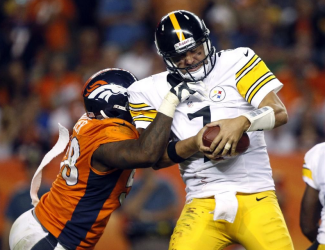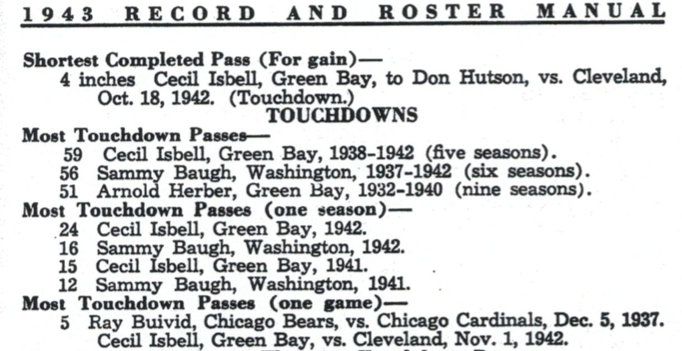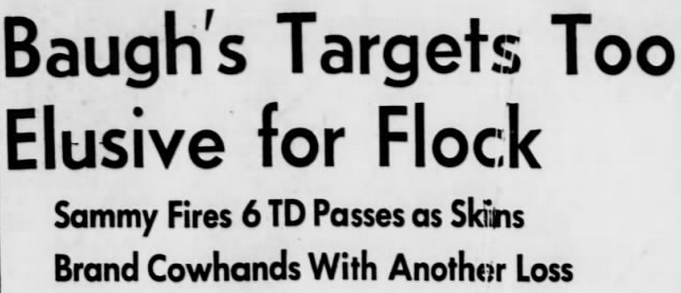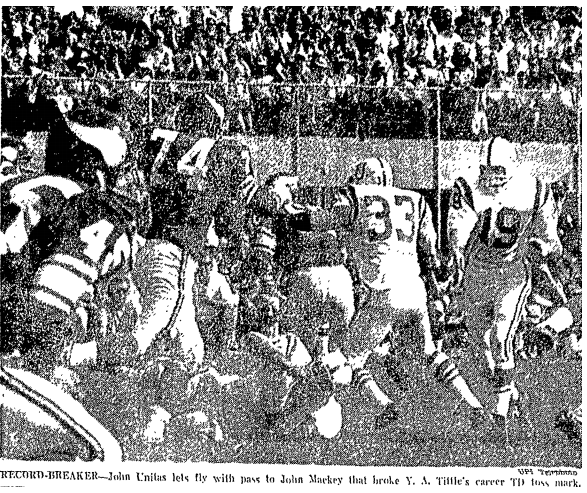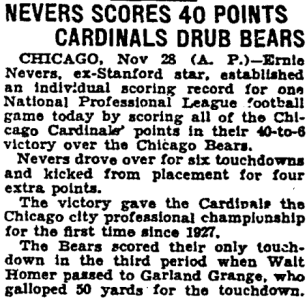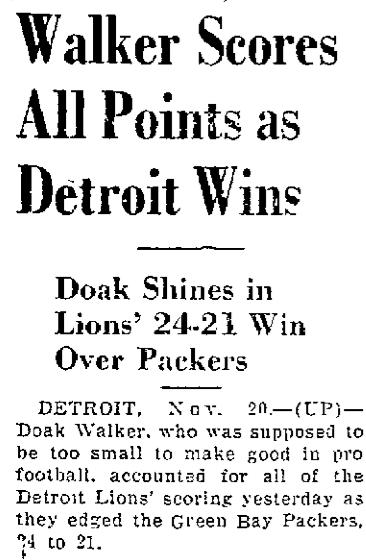Ben Roethlisberger was sacked three times for 16 yards Monday night in the Steelers’ 30-23 win over the Texans. In other words, it was a perfectly normal week for Roethlisberger, whose per-game average over 11 NFL seasons is 2.7 sacks for 17.7 yards, give or take an ammonia capsule.
Big Ben’s 406 career sackings are the 10th most since 1982, when the league began tracking the statistic. But if his 6-foot-5, 240-pound frame can withstand the pounding, he should eventually overtake Packers legend Brett Favre, who’s first with 525 (in more than twice as many games — 302 to Ben’s 150).
This made me wonder: How many first-round quarterbacks have had fewer passing yards, all told, than Roethisberger has sack yards (2,650)? There’s gotta be a few, right?
Actually, I count 29 — not including some young quarterbacks, like the current rookie crop, who haven’t played enough to be considered. Imagine: Ben has gone backward farther than these guys have gone forward (in terms of throwing the ball, anyway).
1st-Round QBs with Fewer Career Passing Yards than Big Ben Has Sack Yards (2,650)
[table width=”400px”]
Quarterback\, First Team,Pick\, Year,Pass Yds
Art Schlichter\, Colts,4th\, 1982,1\,006
Andre Ware\, Lions,7th\, 1990,1\,112
Todd Marinovich\, Raiders,24th\, 1991,1\,345
Akili Smith\, Bengals,3rd\, 1999,2\,212
Kelly Stouffer\, Seahawks*,6th\, 1987,2\,333
Tim Tebow\, Broncos,25th\, 2010,2\,422
[/table]
*Was drafted by the Cardinals, then traded.
Obviously, this is just a sampling. There are many more. And look who’s coming up on Roethlisberger’s radar screen:
[table width=”400px”]
Quarterback\, First Team,Pick\, Year,Pass Yds
Cade McNown\, Bears,12th\, 1999, 3\,111
Ryan Leaf\, Chargers,2nd\, 1998,3\,666
Heath Shuler\, Redskins,3rd\, 1994,3\,691
Matt Leinart\, Cardinals,10th\, 2006,4\,065
JaMarcus Russell\, Raiders,1st\, 2007,4\,083
[/table]
Leinart and Russell might be a bit out of reach for Big Ben, but the other three are certainly catchable.
If Roethlisberger does break Favre’s sack mark, by the way, I can hardly wait to see how the Steelers commemorate the occasion. Maybe they’ll give him Free MRIs for Life.
Or maybe the offensive line — all in good fun, of course — will “open the gate” for the record-breaking sack. That’s a football term for letting the defense through unimpeded, something the line usually does only if it’s trying to, uh, communicate something to the quarterback.
Speaking of which, I heard a funny story once about the Packers opening the gate way back when on Curly Lambeau. In his younger days, Lambeau was their single-wing tailback and signal caller, but by this time — 1929, I think — he was essentially a full-time coach. Anyway, one afternoon at Comiskey Park, the Packers offense was struggling mightily against the Chicago Cardinals, and Curly put himself in the game to show these whippersnappers how it was done.
The whippersnappers weren’t amused. On the next play, they made like toreadors while the Cardinals flooded through and planted Curly in the infield dirt. The coach got the message and went back to being a coach.
Years later, the Packers were in Chicago to play the Cards again, and a bunch of players decided to go to Comiskey the day before to watch the White Sox game. In the umpiring crew was Cal Hubbard, one of the Green Bay linemen who’d opened the gate on Lambeau.
With his former teammates watching, Hubbard walked over to the spot between first and second base where Curly met his demise and drew a big X with his cleat. The Packers howled.
Source: pro-football-reference.com

